Abstract
CP-45,899 {3,3-dimethyl-7-oxo-4-thia-1-azabicyclo(3.2.0)heptane-2-carboxylic acid, 4,4-dioxide, [2S-(2α,5α)]} is an irreversible inhibitor of several bacterial penicillinases and cephalosporinases. In the presence of low concentrations of CP-45,899, ampicillin and other β-lactams readily inhibit the growth of a variety of resistant bacteria that contain β-lactamases. CP-45,899 used alone displays only weak antibacterial activity, with the notable exception of its potent effects on susceptible and resistant strains of Neisseria gonorrhoeae. CP-45,899 appears to be somewhat less potent but markedly more stable (in aqueous solution) than the recently described β-lactamase inhibitor clavulanic acid. The spectrum extensions provided by the two compounds are similar. A 1:1 mixture of CP-45,899 and ampicillin displays marked antimicrobial activity in mice experimentally infected with ampicillin-resistant Staphylococcus aureus, Haemophilus influenzae, Klebsiella pneumoniae, and Proteus vulgaris.
Full text
PDF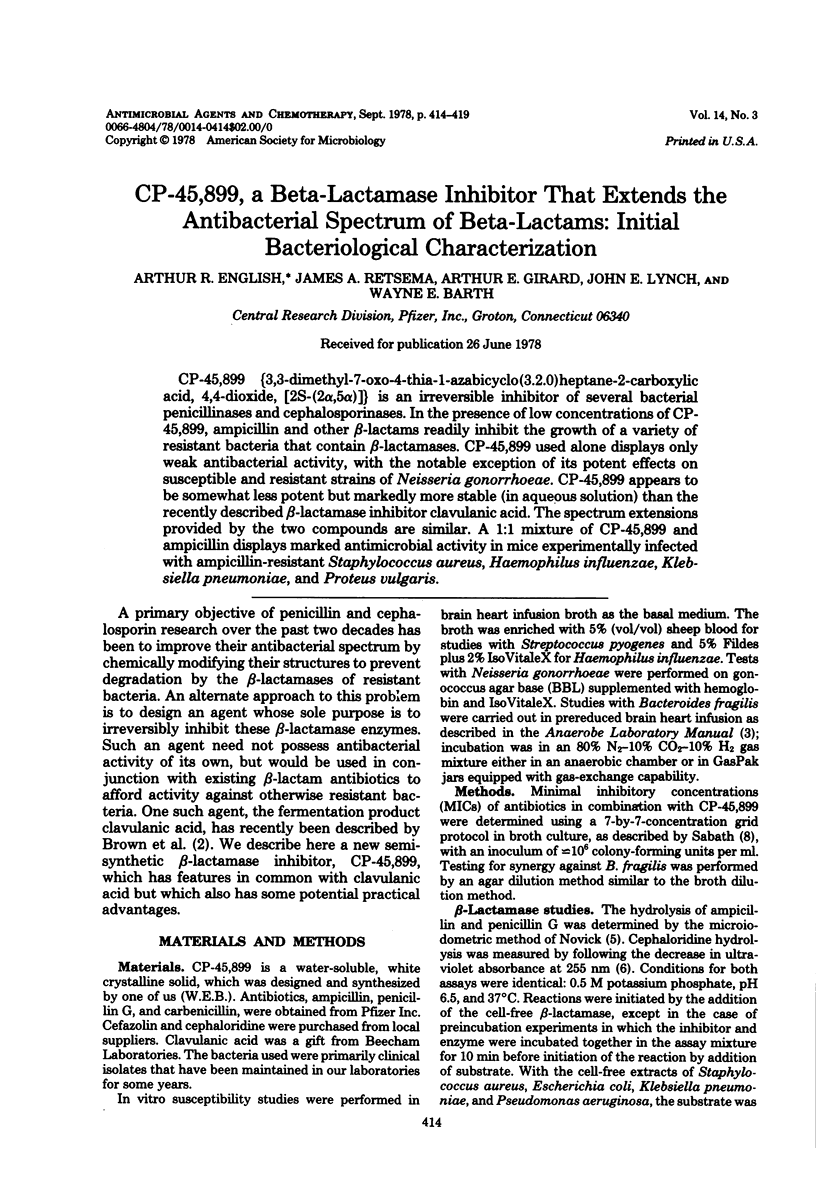
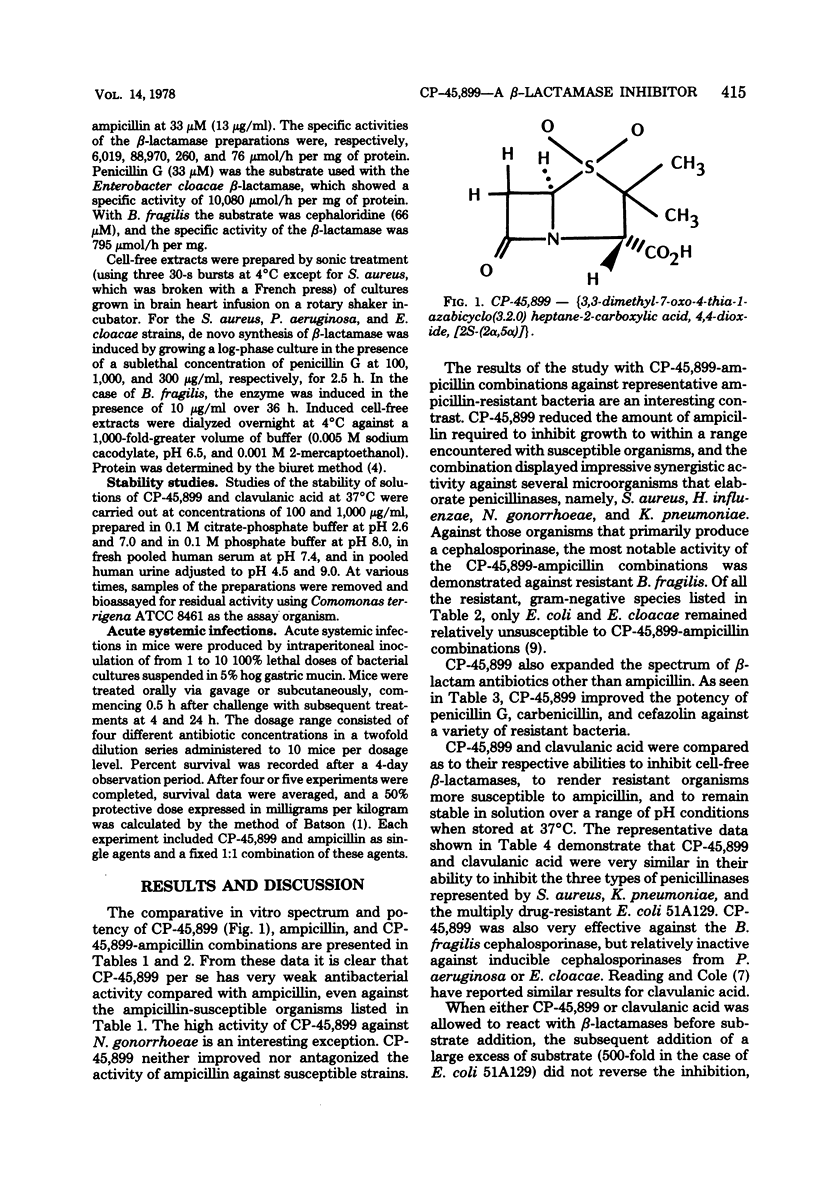
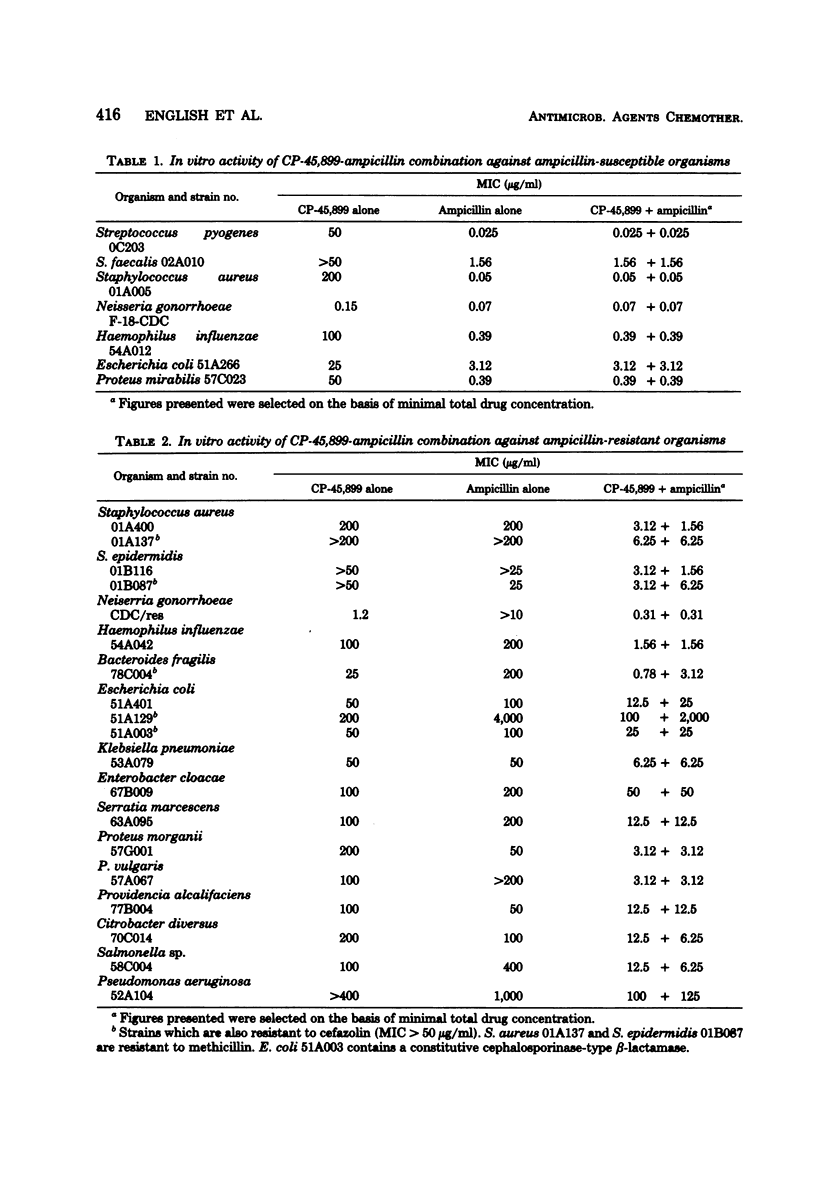
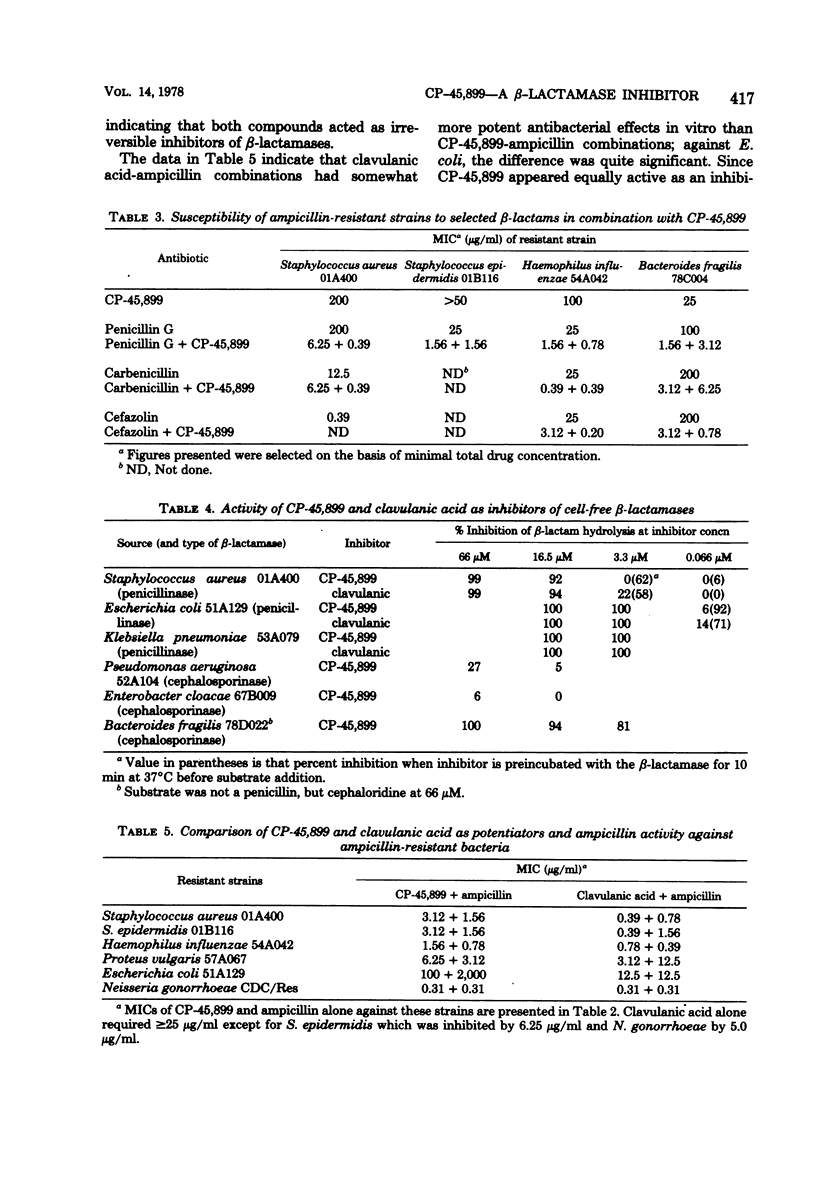
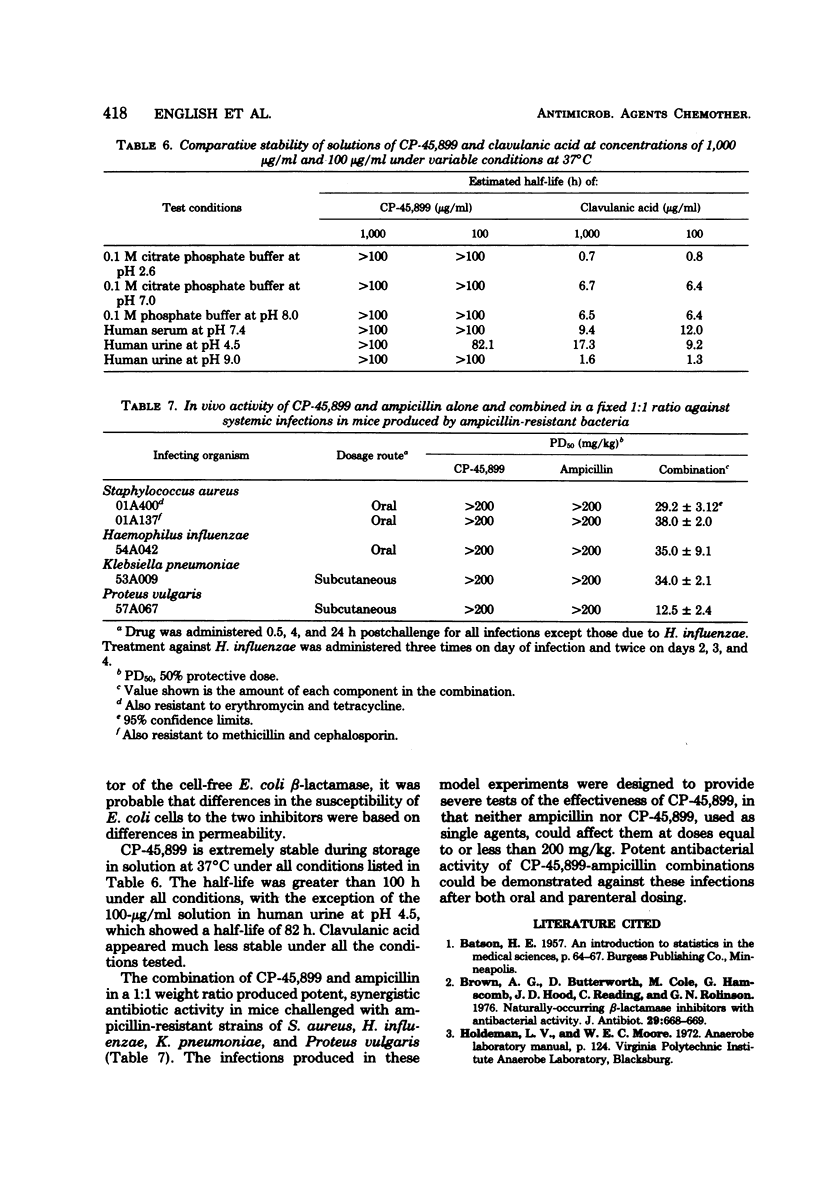
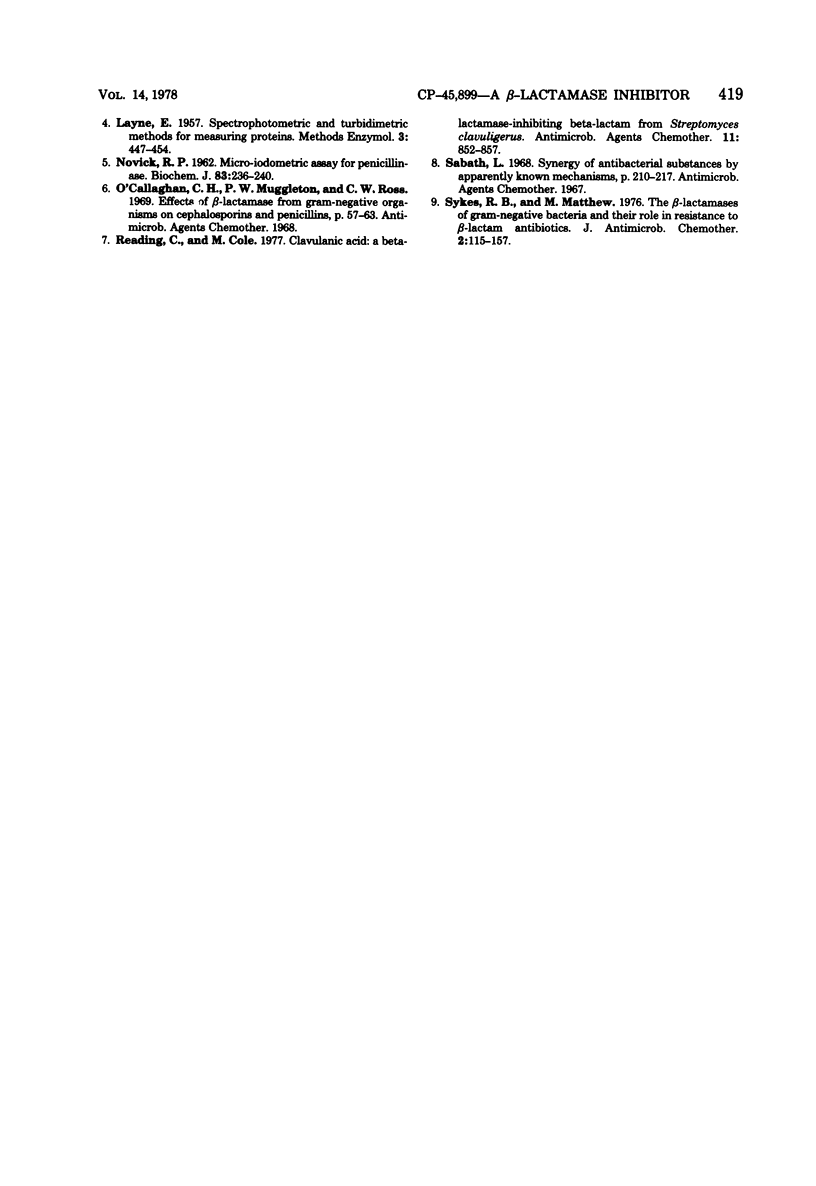
Selected References
These references are in PubMed. This may not be the complete list of references from this article.
- Brown A. G., Butterworth D., Cole M., Hanscomb G., Hood J. D., Reading C., Rolinson G. N. Naturally-occurring beta-lactamase inhibitors with antibacterial activity. J Antibiot (Tokyo) 1976 Jun;29(6):668–669. doi: 10.7164/antibiotics.29.668. [DOI] [PubMed] [Google Scholar]
- NOVICK R. P. Micro-iodometric assay for penicillinase. Biochem J. 1962 May;83:236–240. doi: 10.1042/bj0830236. [DOI] [PMC free article] [PubMed] [Google Scholar]
- O'Callaghan C. H., Muggleton P. W., Ross G. W. Effects of beta-lactamase from gram-negative organisms on cephalosporins and penicillins. Antimicrob Agents Chemother (Bethesda) 1968;8:57–63. [PubMed] [Google Scholar]
- Reading C., Cole M. Clavulanic acid: a beta-lactamase-inhiting beta-lactam from Streptomyces clavuligerus. Antimicrob Agents Chemother. 1977 May;11(5):852–857. doi: 10.1128/aac.11.5.852. [DOI] [PMC free article] [PubMed] [Google Scholar]
- Sykes R. B., Matthew M. The beta-lactamases of gram-negative bacteria and their role in resistance to beta-lactam antibiotics. J Antimicrob Chemother. 1976 Jun;2(2):115–157. doi: 10.1093/jac/2.2.115. [DOI] [PubMed] [Google Scholar]


